
What is the DJI Spark? – A Surprisingly Capable Drone in a Very Tiny Package
June 14, 2019If you’ve been following my site for a while, you’ve probably seen me post about the DJI Mavic Pro, DJI Mavic 2, DJI Mavic Air, the DJI Mavic 2 Enterprise and the DJI Mavic Enterprise Dual. So far, that makes sense. This is a site titled MavicManaics.com after all. Still, there are other DJI drones that I haven’t covered. The DJI Spark is one such drone.
So What is the DJI Spark? Let’s take a closer look and see if we can’t figure it out. Along the way we’ll discuss its features and specs, if it’s just a toy or something that can be used professionally and see, not only who it’s best suited for, but if it will fit your needs.
Let’s get started…
Table of Contents
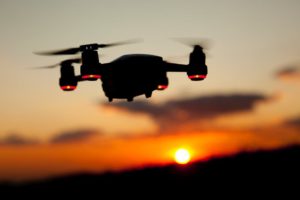
What is the DJI Spark?
To hear DJI tell it, “The DJI Spark is a mini drone that features all of DJI’s signature technologies, allowing you to seize the moment whenever you feel inspired. With intelligent flight control options, a mechanical gimbal, and a camera with incredible image quality, Spark empowers you to push your creative boundaries.”
That’s a pretty accurate with the exception that it really doesn’t feature all of DJI’s signature technologies. It doesn’t have OccuSync 2.0. Although it does have obstacle sensing, it doesn’t offer omnidirectional object detection.
I suppose, at the time of its release, the claim of it including all of DJI’s signature technologies might have been true, but that’s definitely no longer the case. Still, the Spark does offer quite a bit, which we’ll get into in the next section here.
What I can tell you is, of DJI’s consumer line, it’s the least expensive option. Some would argue the Tello is but, even though it is sold on DJI’s website, technically, the Tello was developed and is manufactured by Ryze Tech.
Let’s take a look at the “bells and whistles”…
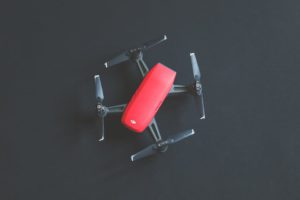
What are its Features and Specs?
The DJI Spark offers quite a bit in such a small package. We’re going to break these features down into a few categories; Highlights, Intelligent Flight Modes and Specs. Let’s get to it…
Highlights
High Performance Camera
DJI has packed a pretty decent camera into such a small package. Here are some of the features it offers:
Mechanical Gimbal Stabilization
The DJI Spark features 2-axis mechanical gimbal stabilization to reduce shake and keep shots stable and detailed.
Powerful Lens
The Spark’s camera has an f/2.6 wide-angle lens with a 25 mm equivalent focal length. Five elements are arranged into a single group that fit into a compressed frame.
1/2.3″ Sensor
The 1/2.3 inch CMOS sensor, allowing you to shoot stabilized video at 1080p and stills at 12 MP.
Multiple Shooting Modes
Spark adopts all previous DJI drone shooting modes while adding two new modes: Pano and ShallowFocus. Here’s the list:
Pano
- Pano – Sphere
- Pano – Vertical
- Pano – Horizontal
- Pano – 180°
ShallowFocus
Quick Launch
With FaceAware, Spark lifts off from your hand by recognizing your face. It takes off and hovers in place within seconds of powering on.
Simple Control
Take amazing aerial photos using just hand gestures, without a remote controller or mobile device.
Create With Ease
Intelligent Flight Modes and intuitive controls help you create cinematic aerial videos with just a few taps.
Intelligent Flight Modes
QuickShot
Let Spark take professional shots for you. QuickShots help you shoot amazing footage with cinematic composition. Here are the four QuickShot Modes:
- Rocket – Ascend with the camera pointing downward.
- Dronie – Fly backward and upward, with the camera locked on your subject.
- Circle – Circle around your target.
- Helix – Fly upward, spiraling around your subject.
TapFly
In TapFly mode, just envision your shot and Spark captures it for you. Tap your phone screen and Spark, using vision technology, flies in the direction of your tap or exactly where you tapped while actively sensing obstacles. Capture shot after shot with just your fingertips. The two available modes are:
- Coordinate – Tap the screen and fly to that spot while maintaining altitude.
- Direction – Keep flying in the direction you tap on the screen.
ActiveTrack
With ActiveTrack, Spark automatically recognizes objects of different shapes and sizes then tracks them according to what they are and how fast they move. This makes tracking much easier and more reliable. This flight mode also offers two options:
- Trace – Track your target from in front or behind, or even circle around it.
- Profile – Follow your subject from a fixed perspective.
Gesture
Deep learning gesture recognition allows you to take selfies with simple hand motions. With PalmControl mode, control Spark’s movement by hand. There are six gestures that the DJI Spark recognizes:
- PalmLaunch
- Away and Follow
- Selfie
- PalmControl
- Beckon
- Record
Specs
Aircraft..
| Takeoff Weight | 300 g |
|---|---|
| Dimensions | 143×143×55 mm |
| Diagonal Distance (propellers excluded) | 170 mm |
| Max Ascent Speed | 9.8 ft/s (3 m/s) in Sport Mode without wind |
| Max Descent Speed | 9.8 ft/s (3 m/s) in Auto Landing Mode |
| Max Speed | 31 mph (50 kph) in Sport Mode without wind |
| Max Service Ceiling Above Sea Level | 13,123 feet (4,000 m) |
| Max Flight Time | 16 minutes (no wind at a consistent 12.4 mph (20 kph)) |
| Max Hovering Time | 15 minutes (no wind) |
| Operating Temperature Range | 32° to 104° F (0° to 40° C) |
| Satellite Positioning Systems | GPS/GLONASS |
| Hover Accuracy Range | Vertical:
+/- 0.1 m (when Vision Positioning is active) or +/-0.5 m Horizontal: +/- 0.3 m (when Vision Positioning is active) or +/-1.5 m |
| Transmitter Power (EIRP) | 2.4 GHz
FCC: 25 dBm; CE: 18 dBm; SRRC: 18 dBm; MIC:18 dBm 5.8 GHz FCC: 27 dBm; CE: 14 dBm; SRRC: 27 dBm; MIC: – |
| Operating Frequency | 2.400 – 2.483 GHz; 5.725 – 5.825 GHz |
3D Sensing System
| Obstacle Sensing Range | 1-16 ft (0.2 – 5 m) |
|---|---|
| Operating Environment | Detects diffuse reflective surfaces (>20%) larger than 20×20 cm (walls, trees, people, etc.) |
Camera
| Sensor | 1/2.3″ CMOS
Effective pixels: 12 MP |
|---|---|
| Lens | FOV 81.9° 25 mm (35 mm format equivalent) f/2.6
(shooting-range: 2 m to ∞) |
| ISO Range | Video: 100-3200
Photo: 100-1600 |
| Electronic Shutter Speed | 2-1/8000 s |
| Image Size | 3968×2976
1440×1080 with ShallowFocus 2300×1280 with Pano (horizontal) 960×1280 with Pano (vertical) |
| Still Photography Modes | Single Shot
Burst Shooting: 3 frames Auto Exposure Bracketing (AEB): 3 bracketed frames at 0.7 EV bias Interval: 2/3/5/7/10/15/20/30/60 s |
| Video Resolution | FHD: 1920×1080 30p |
| Max Video Bitrate | 24 Mbps |
| Supported File Systems | FAT32 |
| Photo Format | JPEG |
| Video Format | MP4 (MPEG-4 AVC/H.264) |
Remote Controller
| Operating Frequency | 2.412-2.462 GHz; 5.745-5.825 GHz |
|---|---|
| Max Transmission Distance | 2.412 – 2.462 GHz (unobstructed, free of interference)
FCC: 1.2 mi (2 km); CE: 0.3 mi (500 m) SRRC: 0.3 mi (500 m); MIC: 0.3 mi (500 m) 5.745 – 5.825 GHz (unobstructed, free of interference) FCC: 1.2 mi (2 km); CE: 0.18 mi (300 m) SRRC: 0.7 mi (1.2 km); MIC: – |
| Operating Temperature Range | 32° to 104° F (0° to 40° C) |
| Battery | 2970 mAh |
| Transmitter Power (EIRP) | 2.4 GHz
FCC: ≤26 dBm; CE: ≤18 dBm; SRCC: ≤18 dBm; MIC: ≤18 dBm 5.8 GHz FCC: ≤28 dBm; CE: ≤14 dBm; SRCC: ≤26 dBm; MIC: – |
| Operating Current/Voltage | 950 mAh @3.7 V |
| Supported Mobile Device Size | Thickness range: 6.5-8.5 mm
Max length: 160 mm |
Intelligent Flight Battery
| Capacity | 1480 mAh |
|---|---|
| Voltage | 11.4 V |
| Max Charging Voltage | 13.05 V |
| Battery Type | LiPo 3S |
| Energy | 16.87 Wh |
| Net Weight | Approx. 0.2 lbs (95 g) |
| Charging Temperature Range | 41° to 104° F (5° to 40° C) |
Gimbal
| Controllable Range | Pitch: -85° to 0° |
|---|---|
| Stabilization | 2-axis mechanical (pitch, roll) |
Vision System
| Velocity Range | ≤22.4 mph (36 kph) at 6.6 ft (2 m) above ground |
|---|---|
| Altitude Range | 0-26 ft (0 – 8 m) |
| Operating Range | 0-98 ft (0 – 30 m) |
| Operating Environment | Detects clearly patterned surfaces with adequate lighting (lux>15) and diffuse reflectivity (>20%) |
Wi-Fi
| Operating Frequency | 2.4 GHz/5.8 GHz |
|---|---|
| Max Transmission Distance | 100 m(Distance), 50 m(Height) (Unobstructed, free of interference) |
Charger
| Input | 100-240 V; 50/60 Hz; 0.5 A |
|---|---|
| Output | 5 V/3 A; 9 V/2 A; 12 V/1.5 A |
Recommended Micro SD Cards
| Model | Sandisk 16/32 GB UHS-1 Micro SDHC
Kingston 16/32 GB UHS-1 Micro SDHC Samsung 16/32 GB UHS-I Micro SDHC Sandisk 64 GB UHS-1 Micro SDXC Kingston 64 GB UHS-1 Micro SDXC Samsung 64 GB UHS-I Micro SDXC |
|---|
As you can see, DJI really did pack a lot into this baby. What’s truly impressive is that they were able to do so in such a small, compact form. It just goes to show that the technology keeps getting better while, at the same time, getting smaller too.
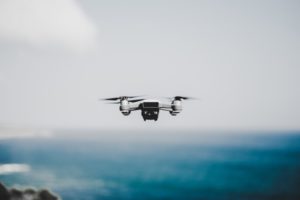 Is it a Toy or Can it be Used Professionally?
Is it a Toy or Can it be Used Professionally?
Yes. It’s both and it’s either. The DJI Spark is fun for sure. Chances are, if you pick one of these babies up, you’ll end up flying it more for fun than for anything else. That said, there’s a lot of professional uses for it too.
One of the best pros to this drone is its size. It can go where many others, even the DJI Mavic Air and Pro models, can’t. That makes it perfect for those tight fit scenarios that just can’t be handled with the larger, and usually more capable, options.
In the end, it depends on the intended use. If the professional use is for broadcast video, this probably isn’t the bird for you. On the other hand, if the job requires inspecting areas that are hard to get to, with little room to navigate, the DJI Spark might just fit the bill perfectly.
Only you can decide what your situation requires and if the Spark will meet those needs or not. Don’t forget to factor in flight time as the DJI Spark offers a 16-minute maximum in that department where the Mavic series pushes close to double that. I suppose that’s the price you pay for a smaller package overall.
 Who is the DJI Spark Best Suited for?
Who is the DJI Spark Best Suited for?
The DJI Spark is perfect for anyone looking to add another bird to their existing fleet or for those that have a specific need that the Spark’s size and capabilities can handle. It’s not for racers or professional photographers but could be a good fit for Realtors, insurance inspectors and so on.
For me, the best fit is someone who wants to have fun, doesn’t want to break the bank but needs a drone that’s stable, offers decent features and intelligence and a reasonable flight time. This fits the range of most consumers. Anyone else I’d consider a prosumer or professional and probably steer them toward the Mavic series of drones.
Conclusion
So What is the DJI Spark? Now you know. I myself, at the time of this writing, have a DJI Mavic Pro (the original that I upgraded to from my two DJI Phantom 2 drones) and a Tello (that I won in a contest put on by IBM). I love my Mavic Pro and recommend it to anyone. That said, I’ve been eyeing the Mavic 2 Pro while hoping that a DJI Phantom 5 will be out soon.
Now DJI has thrown me for a loop by coming out with the RoboMaster S1 and it’s only a matter of time before I get me one of those too!
So, what do you think of the DJI Spark? Do you already have one? Are you planning to get one? What uses do you see the DJI Spark being perfect for? Please let me know by commenting below and, if you’re ready, grab your DJI Spark from Amazon here:
Thank you,
Scot Hinkle
MavicManiacs.com
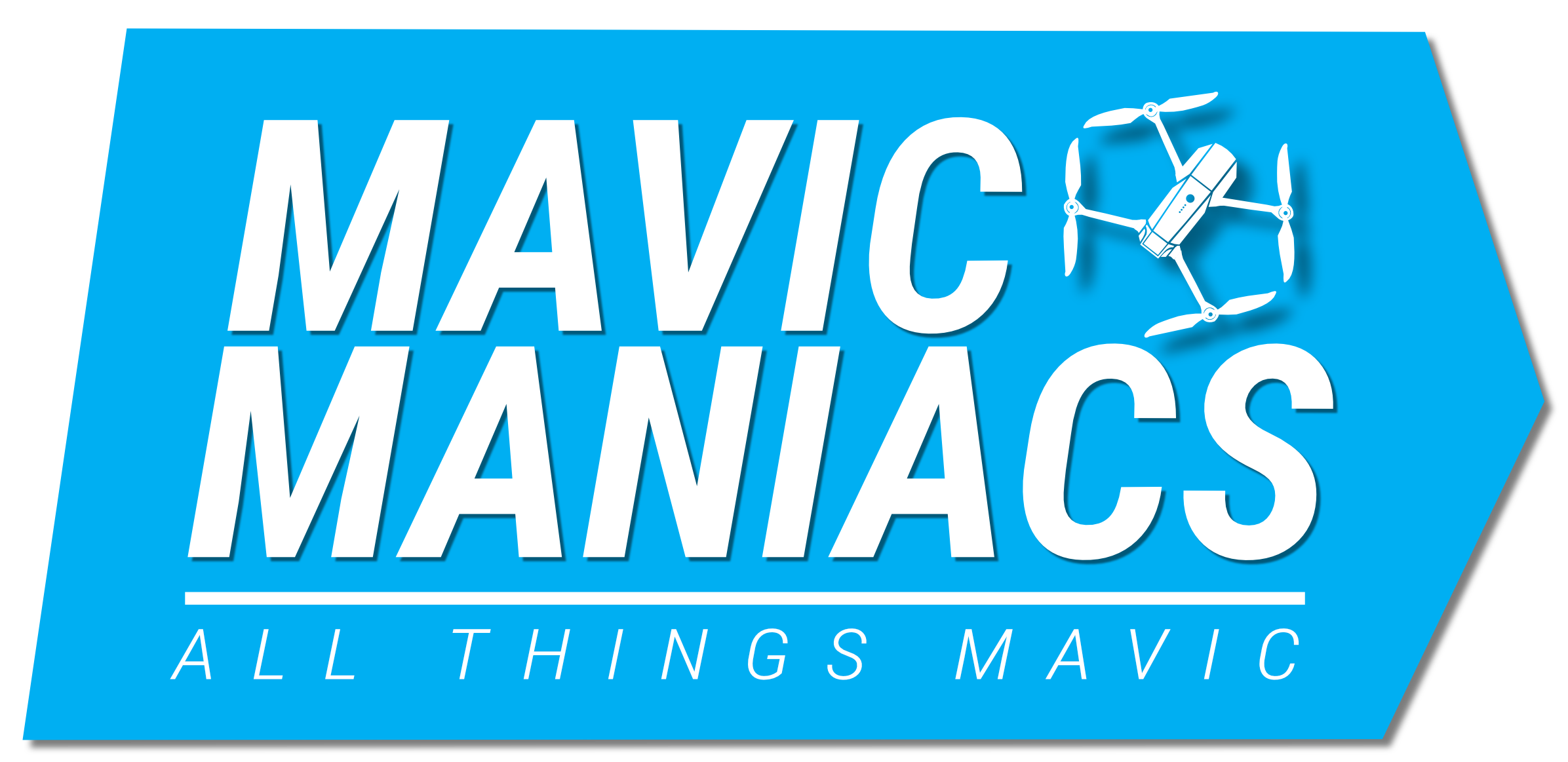

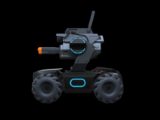


I’ve been looking at different kinds of drones for years now and still cannot decide what to buy. I, in fact, became an affiliate seller of drones for one of those sites selling drones but since I haven’t owned one yet, I haven’t made any sales.
You got to own one to effectively blog about drones. So I made the decision to finally buy a drone and good thing I stumbled upon this drone review site of yours. It looks like this DJI Spark is a good choice for me.
I just got one question. Can you point me to a model with an operating range of more than 30 meters?
Hello,
Yes, it’s easier to sell an item when you have first-hand experience with it. Still, any drone experience would be helpful. It doesn’t have to be with a specific model. It will just help you understand how drones work and so on.
With the remote controller, I believe the range is actually just over one mile. If you’re using WiFi only, to a tablet or phone, then the range is much less. If you need more than that, consider the Mavic Pro.
Thank you,
Scott
Hey Scott
Great review of the DJI Spark, given that most of my drone use has been just for fun and with fairly cheap drones this looks like a nice step up. I noticed that in your review many of the performance parameters are given in a no wind situation, while I know this is standard I am just wondering given that this is a smallish drone just how much a moderate wind affects its performance.
Any advice would be greatly appreciated.
Thanks
Hello there,
That’s a hard one to really answer. I usually take the top speed as a guide and figure that it should be able to handle winds at half that speed easily. It should be OK at wind speeds approaching 75% of max flight speed but I wouldn’t push it beyond that.
Scott
Hi, Scott. I enjoyed reading your review. There is a lot of information to digest here but it sounds like DJI really has it together with their technology and along with the Mavic drones have created some great competition with other drone manufacturers.
I have, as many do, what everyone would call a couple a of toy drones, (one has a camera that shows vibration), but have had a real hankering (official word) to have one that is more capable of taking great video without the vibration issues of the cheaper ones.
A longer flying time than 8-10 min would be at the top of the list as well and this drone seems to fit that need.
I have a website that deals with the RV lifestyle and would love to incorporate some videos of scenery we have encountered in our travels and I think this could be one of the top possibilities. Would you agree with that presumption or would you recommend something else?
I am going to look into this further and do some additional research to see what I can find and I will include your other posts as well. With so many good drones out there it’s going to be hard to make the right choice for me.
Wish me luck,
Wayne
The Spark May fit your needs well. That said, for just a little more, you could get the Mavic Air. Between the two, I’d take the Air over the Spark. The main reason being that the Air offers a 3-axis gimbal. This will give you even more stable footage.
I have the Mavic Pro myself and I love it. Some argue that the Air beats the Mavic in image quality, due to the data rate the Air offers. I can’t say for sure but I do know the Air beats the Spark, hands-down.
I’d love to know more about your RV lifestyle site. I used to travel the country in my 40′ class A, selling my photography at art festivals. I don’t do that and more and now have a 34′ 5th-wheel.
Thanks for taking the time to comment.
Scott